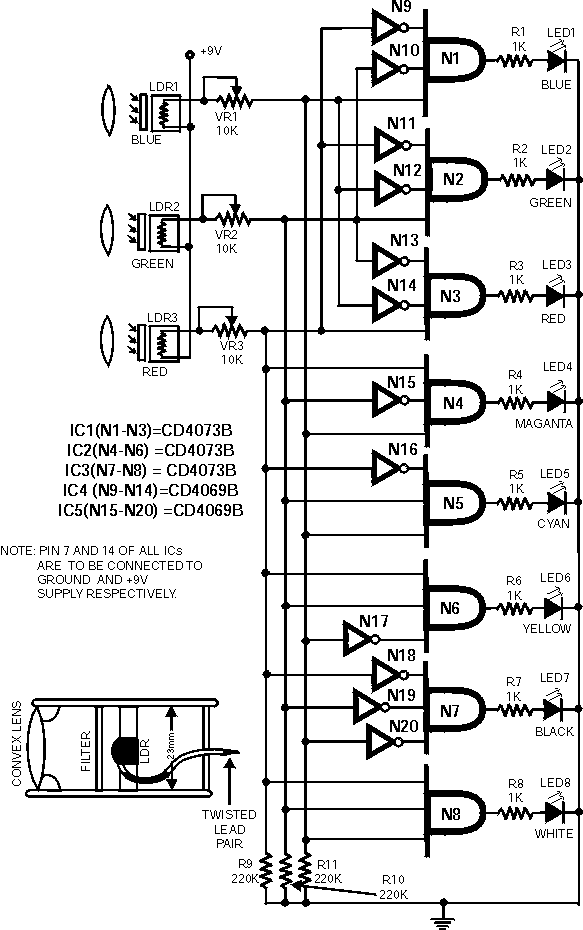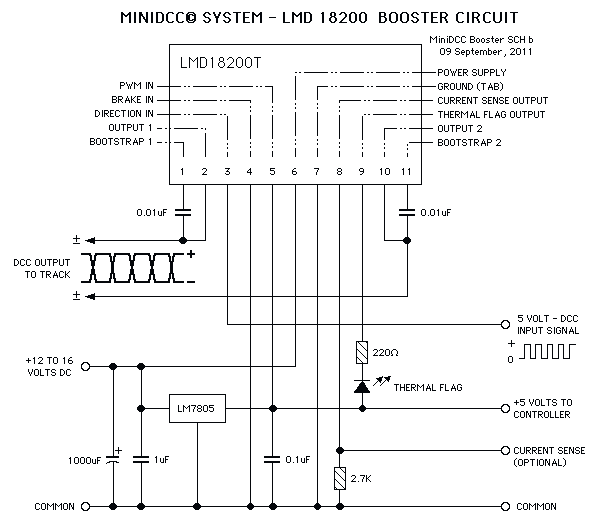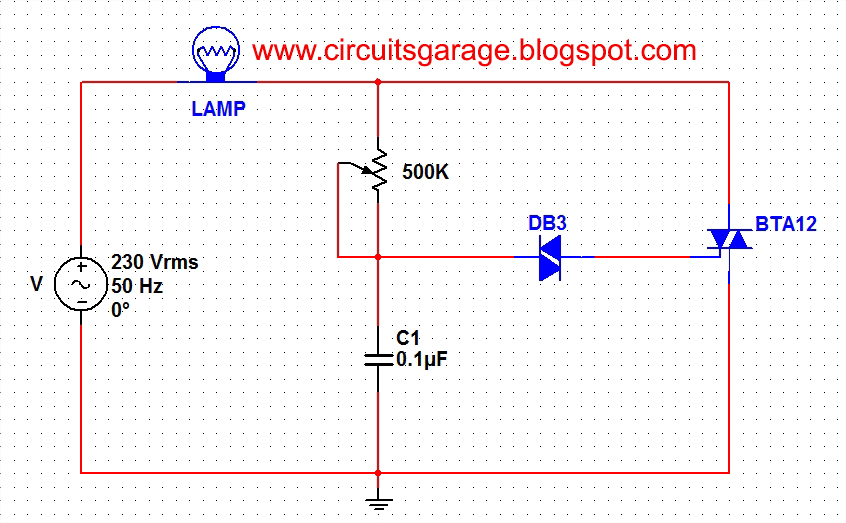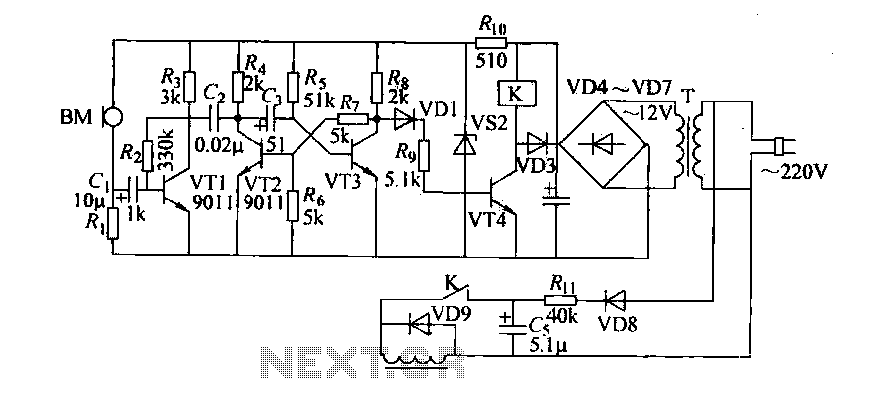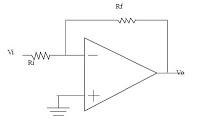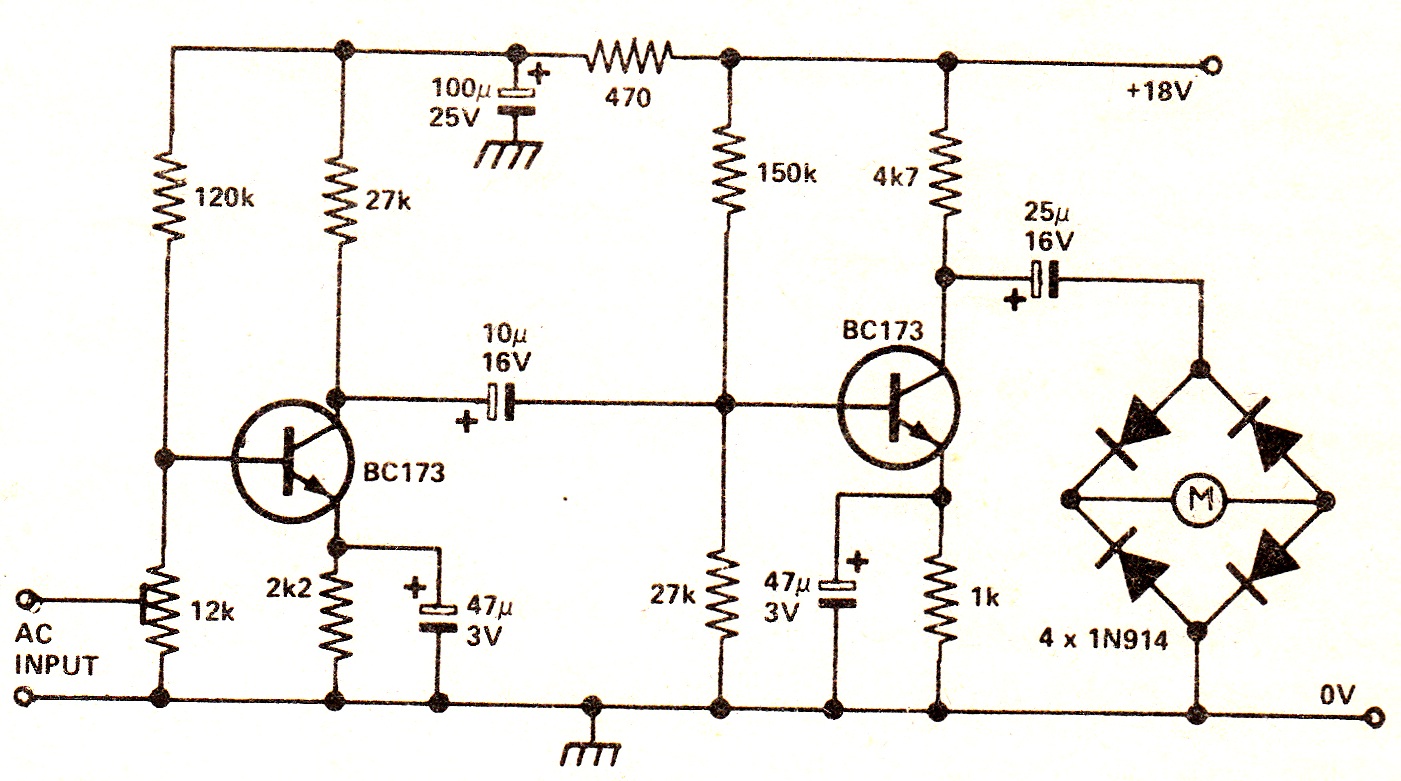
12V Battery Charger Circuit
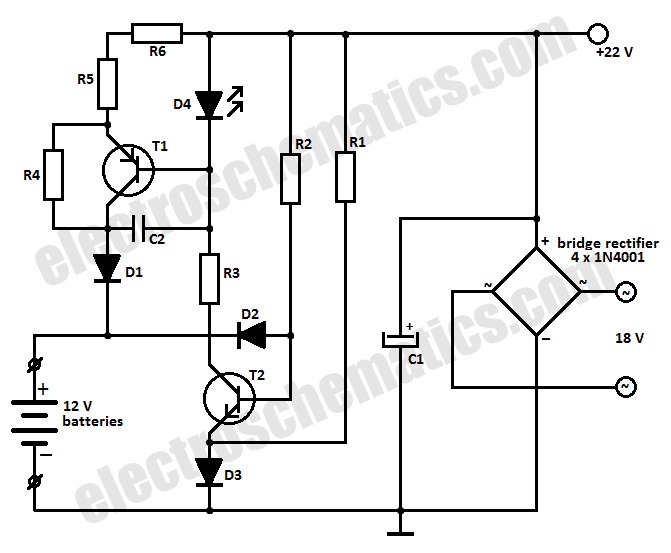
This battery charger circuit is designed to charge one or more batteries with a total nominal voltage of 12 V, which accommodates either ten NiCd batteries or six 2 V lead-acid batteries.
The battery charger circuit operates by utilizing a voltage regulator and a suitable charging algorithm to ensure safe and efficient charging of the batteries. The circuit typically consists of a transformer, rectifier, filter capacitor, and a voltage regulator, which together convert the AC mains voltage to a stable DC output suitable for battery charging.
In a standard configuration, the transformer steps down the AC voltage to a lower level, which is then rectified by a diode bridge to convert the AC voltage to pulsating DC. A filter capacitor smooths out the rectified voltage, providing a more stable DC output. The voltage regulator, often a linear regulator or a switching regulator, maintains the output voltage at the desired level, compensating for variations in input voltage and load conditions.
For charging NiCd batteries, the circuit may include additional features such as a constant current source to prevent overcharging and a temperature sensor to monitor battery temperature during the charging process. This ensures that the batteries are charged safely and efficiently without the risk of thermal runaway or damage.
When charging lead-acid batteries, the circuit may incorporate a multi-stage charging process, including bulk charging, absorption charging, and float charging phases. This method helps to optimize the charging process, prolong battery life, and enhance performance.
In summary, this battery charger circuit is versatile and can accommodate various battery types, making it suitable for applications requiring reliable battery charging solutions. Proper design considerations and components selection are crucial for ensuring the circuit's efficiency and safety during operation.This battery charger circuit can be used to charge one or more batteries with the total nominal voltage of 12 V, meaning ten NiCd battery or six 2 V lead a.. 🔗 External reference
The battery charger circuit operates by utilizing a voltage regulator and a suitable charging algorithm to ensure safe and efficient charging of the batteries. The circuit typically consists of a transformer, rectifier, filter capacitor, and a voltage regulator, which together convert the AC mains voltage to a stable DC output suitable for battery charging.
In a standard configuration, the transformer steps down the AC voltage to a lower level, which is then rectified by a diode bridge to convert the AC voltage to pulsating DC. A filter capacitor smooths out the rectified voltage, providing a more stable DC output. The voltage regulator, often a linear regulator or a switching regulator, maintains the output voltage at the desired level, compensating for variations in input voltage and load conditions.
For charging NiCd batteries, the circuit may include additional features such as a constant current source to prevent overcharging and a temperature sensor to monitor battery temperature during the charging process. This ensures that the batteries are charged safely and efficiently without the risk of thermal runaway or damage.
When charging lead-acid batteries, the circuit may incorporate a multi-stage charging process, including bulk charging, absorption charging, and float charging phases. This method helps to optimize the charging process, prolong battery life, and enhance performance.
In summary, this battery charger circuit is versatile and can accommodate various battery types, making it suitable for applications requiring reliable battery charging solutions. Proper design considerations and components selection are crucial for ensuring the circuit's efficiency and safety during operation.This battery charger circuit can be used to charge one or more batteries with the total nominal voltage of 12 V, meaning ten NiCd battery or six 2 V lead a.. 🔗 External reference
